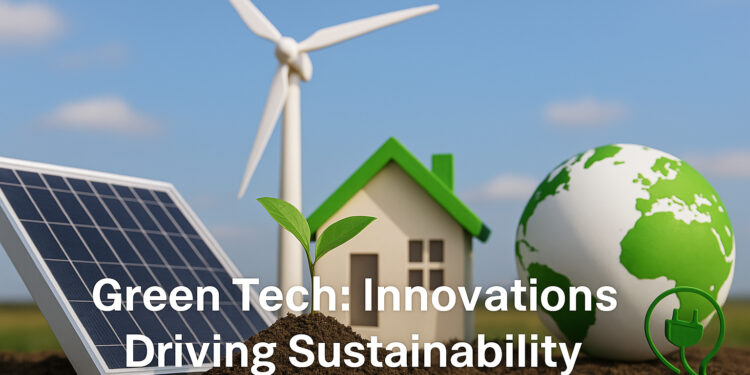As the world faces growing environmental challenges, technology has emerged as a key driver of sustainability. From renewable energy to eco-friendly materials, green innovations are transforming industries and everyday life. These technologies not only help reduce carbon emissions but also promote efficient resource management. Green tech is paving the way for a cleaner, more sustainable future.
Renewable Energy Revolution
Renewable energy is at the heart of the green technology movement. Solar, wind, and hydropower innovations have made clean energy more accessible and affordable than ever. Advances in battery storage now allow renewable power to be stored and used efficiently, even when the sun isn’t shining or the wind isn’t blowing. Countries investing in renewable infrastructure are seeing reduced dependence on fossil fuels and stronger energy security.
Sustainable Transportation
Electric vehicles (EVs) and hydrogen-powered transport are reshaping how we move. With longer battery life, faster charging, and expanding infrastructure, EV adoption continues to rise globally. Beyond cars, public transport systems are integrating clean energy solutions—such as electric buses and solar-powered stations—reducing emissions in urban areas.
Smart Cities and Green Infrastructure
Smart city technologies use data and automation to make urban living more efficient. From intelligent street lighting to waste management systems, these innovations cut energy use and minimize waste. Green buildings with solar panels, water recycling, and smart HVAC systems are also becoming standard, promoting sustainability at scale.
Agriculture and Food Innovation
Technology is also revolutionizing agriculture through precision farming, vertical gardens, and drone-based crop monitoring. These tools optimize water use, minimize fertilizers, and increase yields sustainably. Innovations in plant-based foods and lab-grown meat further contribute to reducing environmental impact.
Waste Reduction and Circular Economy
Recycling has evolved beyond separating trash—companies now use AI to sort waste, convert plastics into reusable materials, and design products for longer lifespans. The circular economy model focuses on reusing and repurposing, ensuring that resources stay in circulation longer and waste generation is minimized.
The Role of Artificial Intelligence
AI plays a crucial role in predicting climate trends, optimizing energy grids, and improving sustainability planning. From monitoring deforestation to tracking carbon emissions, AI empowers industries and governments to make data-driven decisions for environmental preservation.
Conclusion
Green technology is no longer a future vision—it’s a global reality driving meaningful change. By embracing innovation and collaboration, societies can balance progress with environmental responsibility. As green tech continues to evolve, it holds the promise of a more sustainable planet for generations to come.


